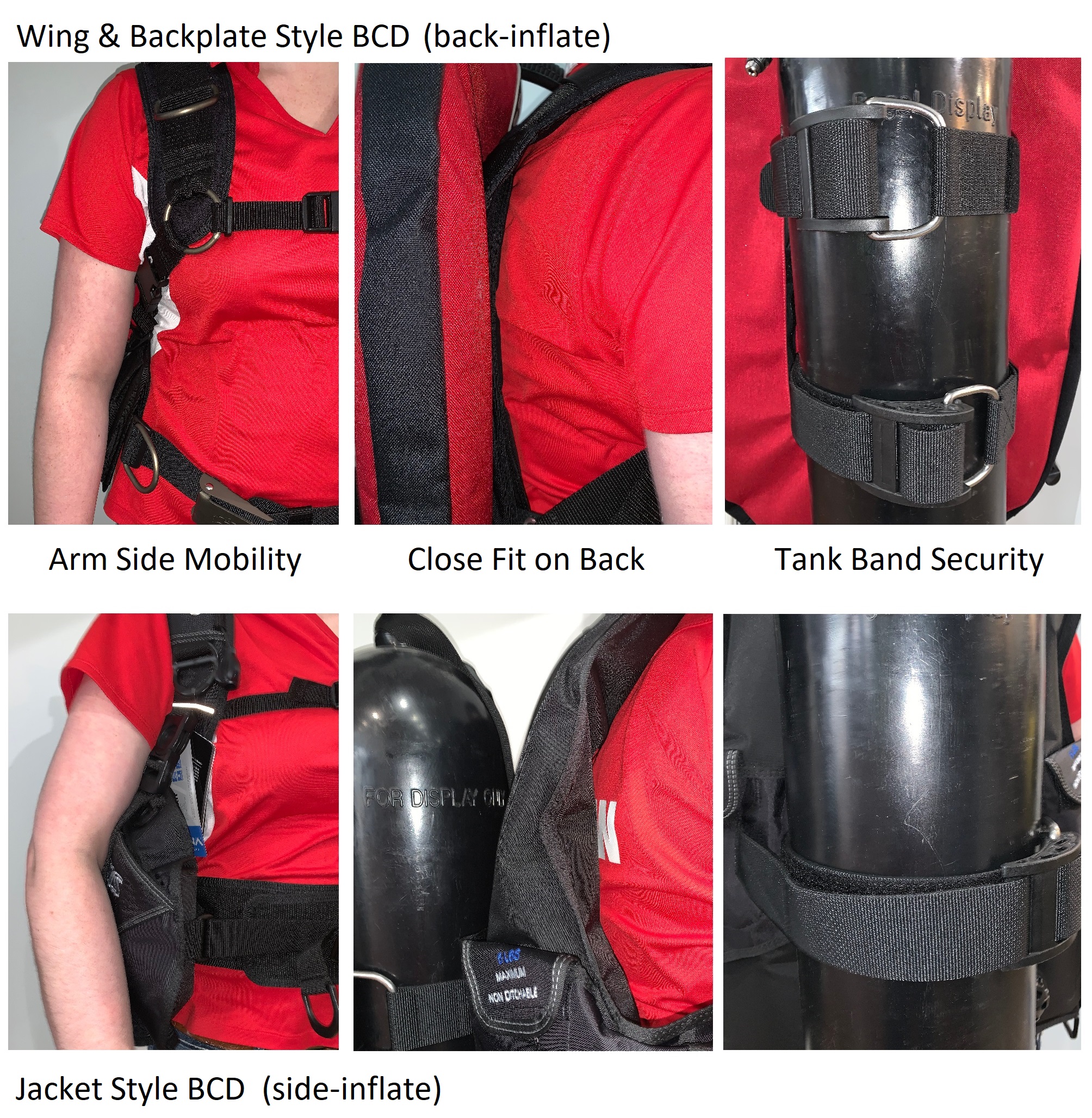Scuba BCD

Purpose
BCD stands for Buoyancy Compensator (Control) Device and it is used to carry your tank on your back and helps you achieve positive buoyancy at the surface and neutral buoyancy while underwater. By adding and subtracting air in the bladder, you can change your buoyancy.
Features
Style
There are several different styles of BCDs and each will satisfy different needs and individual preferences.
A jacket style BCD is the most common one, especially in dive shop rental fleets. The bladder of the jacket-style BCD is on the back and comes around the sides underneath the armpits. Often has additional fabric and padding around the sides and back.
A back-inflate style BCD will have the bladder only on the back which makes it easier to maintain good trim underwater and eliminates bulkiness at your sides.
A wing & backplate style BCD utilizes a modular system of gear including an inflatable wing that attaches to a backplate and harness system. The wing & backplate system is used by recreational and technical divers and can be configured with different parts depending on the diving you're doing. Switch out the wing for a doubles wing for diving twin tanks or switch out the backplate between stainless steel and aluminum. Integrated weight pockets can be added or removed from the waist webbing as well as the tank bands depending on your requirements.
A sidemount BCD allows you to wear two tanks positioned at your sides rather than on your back. While this style has been most popular with cave and wreck divers, it has become popular with recreational divers who like having the extra tank of air and the buoyancy stability that sidemount provides.
Difference between a back-inflate or wing & backplate BCD and a side-inflate or jacket-style BCD:

Gender
Most BCDs are considered unisex but some are designed specifically for women in mind. They are designed to accommodate extra room around the hips and chest area and usually are narrower in the shoulders and have a shorter torso length.
Integrated Weights
Most BCDs will have special pockets for weights so that you can distribute your required weights across your body. Besides wearing a weight belt on your waist, you can put weights on your back (trim pockets) or on the side of the BCD. This will help your "trim" in the water (maintain horizontal position). Check the amount of weight that each pocket will carry to ensure you have enough space to carry the weight that you need.
Other Design Considerations
When choosing a BCD there are other design considerations to take into account.
D-Rings are usually metal or plastic and provide the diver a point to attach accessories for easy access during the dive.
Adjustable straps are usually found on the shoulders, chest area, and waist area. These ensure a more comfortable and secure fit. The cummerbund that wraps at the waist area is usually adjustable as well.
Tank bands on the back of the BCD are what hold your tank securely to your body. You will have either 1 or 2 tank bands on your BCD, depending on the brand and style. The buckle on the tank band is either plastic or metal, metal being the more reliable and strong choice.
Care & Maintenance
After each dive, rinse your BCD well with fresh, clean water to rid it of any salt, sand, dirt, or chlorine. Give the power inflator a good rinse to get rid of any sand or salt that is caught under the buttons. Regularly rinse and clean the inside of the bladder by adding water and BCD cleaner to the inside either through the power inflator or over pressure releases. Rinse the bladder well, drain any water from the inside, add air to the BCD and store it slightly inflated. Your BCD should have a thorough inspection by a professionally trained technician at your local dive shop every 1-2 years or 100 dives. A BCD servicing will include testing the bladder to ensure it holds air, cleaning and repairing the power inflator, inspection of straps and other parts.


